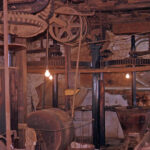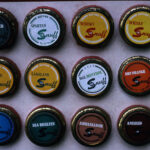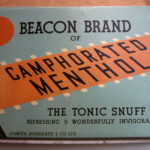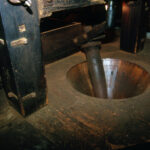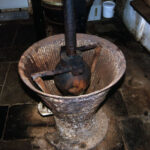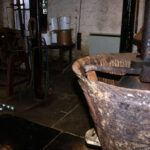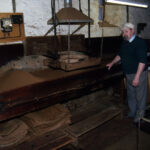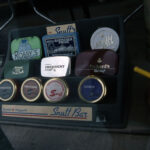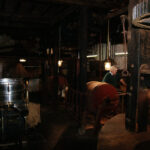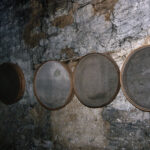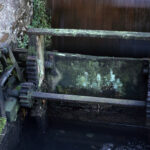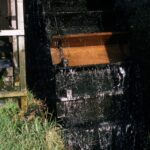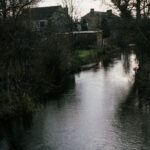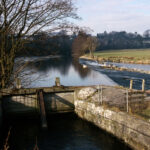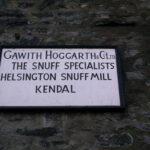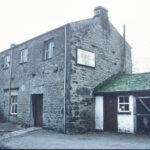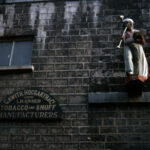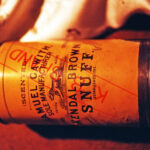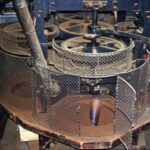Here is an excerpt from Industrial Archaeology of the Lake Counties, published in 1969. Since then, the three firms mentioned have reduced to one – Samuel Gawith & Co – still operating on an industrial estate to the north of Kendal. Click here to read more about Helsington Laithes mill.
Although the major part of the nation’s snuff is made in Sheffield, the remainder, even today, is manufactured in the Kendal district by an industry of considerable age and standing. This is represented by the three firms of Samuel Gawith & Co, Gawith Hoggarth & Co, and Messrs Illingworth’s at Aynam Mills.
There was a considerable import of tobacco through Whitehaven in the first half of the 18th century, as well as through the port of Lancaster, and it is possible that packhorse loads from Whitehaven found their first resting-place, after a day’s journey via Hardknott, in southern Westmorland. Since the goods were jogged continually, the resultant tobacco dust and broken stalks may have been purchased by Kendal traders at a nominal price. Whatever the case, Kendal is known to have had a snuff mill on Natland Beck in 1740, and there was another at Mealbank in 1792.
The industry was essentially a water-powered one, involving the use of grinding machinery, and the organisation of the present-day Helsington Laithes mill gives a clear idea of its refinements. This mill still obtains its power from an undershot, paddle-type wheel. The tobacco, carefully roasted, is graded and then ground to a powder in pestle grinders. There are also ball mills, a mixer and a riddle-and-shaker which utilises a principle similar to that used in corning gunpowder. The product is then blended, wrapped and marketed from Kendal.
Kendal Museum have produced an information sheet about the snuff industry, and look out for the book ‘Kendal Brown: the history of Kendal’s tobacco and snuff industry’ by J.W.Dunderdale, published in 2003 by Helm Press.
- Interior, Oct 1964 (76-051)
- Snuff tin samples, Feb1991 (58-048)
- Beacon Brand, Sep 1992 (58-044)
- 1 pestle of 4-pestle unit, Feb 1991 (58-037)
- Older, 2-pestle mortar, Feb 1991 (58-036)
- Position of single pestle in mill, Feb 1991 (58-035)
- Jigger tray, Feb 1991 (58-033)
- Nine snuffs, Jun 1993 (58-032)
- Alan Powley at work, Feb 1991 (58-030)
- Old sieves, Feb 1991 (58-025)
- Snuff mill klew with gears, Nov 1986 (58-010)
- Undershot waterwheel, Nov 1986 (58-006)
- Head race to mill, Nov 1986 (58-004)
- Weir on River Kent, Feb 1991 (58-003)
- Plaque, Nov 1986 (58-001)
- Helsington Laithes Marble & Snuff Mill, Feb 1991 (53-057)
- **Gawith & Hoggarth’s packing dept, Lowther St, Oct 1964 (43-075)
- ** Snuff from Kendal from 1792, Aug 1988 (37-020)
- ** Grinder set at Illingworth’s, Dec 1964 (13-231)
All these photos were taken by Mike Davies-Shiel, and feature the mill at Helsington Laithes except for those marked **.
(Page created 19/01/20)

